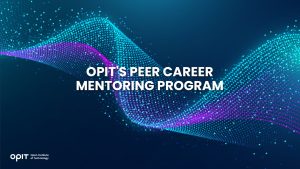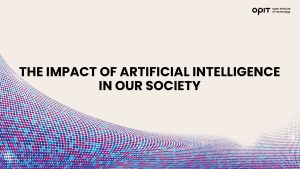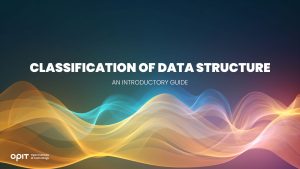
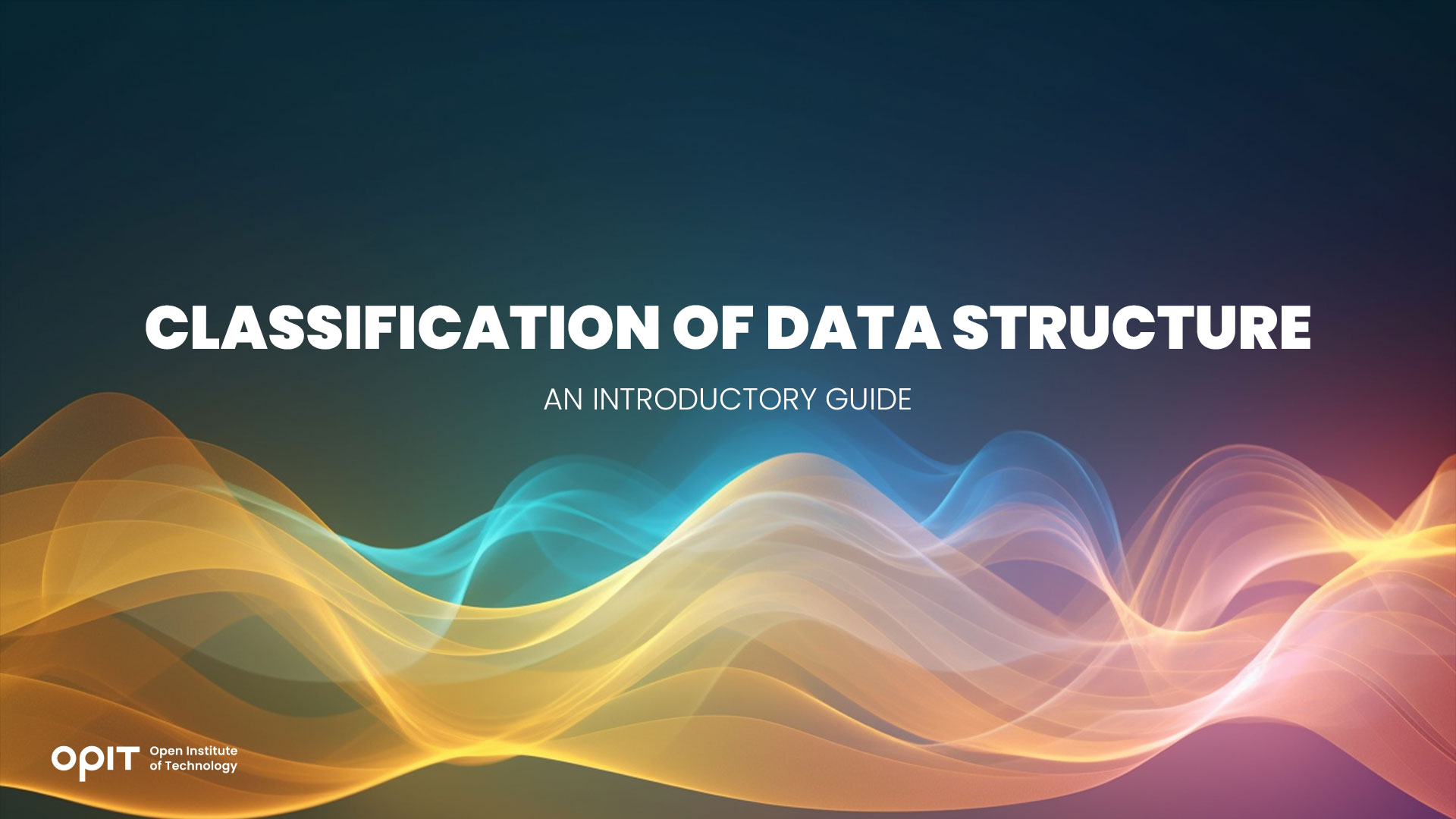
Most people feel much better when they organize their personal spaces. Whether that’s an office, living room, or bedroom, it feels good to have everything arranged. Besides giving you a sense of peace and satisfaction, a neatly-organized space ensures you can find everything you need with ease.
The same goes for programs. They need data structures, i.e., ways of organizing data to ensure optimized processing, storage, and retrieval. Without data structures, it would be impossible to create efficient, functional programs, meaning the entire computer science field wouldn’t have its foundation.
Not all data structures are created equal. You have primitive and non-primitive structures, with the latter being divided into several subgroups. If you want to be a better programmer and write reliable and efficient codes, you need to understand the key differences between these structures.
In this introduction to data structures, we’ll cover their classifications, characteristics, and applications.
Primitive Data Structures
Let’s start our journey with the simplest data structures. Primitive data structures (simple data types) consist of characters that can’t be divided. They aren’t a collection of data and can store only one type of data, hence their name. Since primitive data structures can be operated (manipulated) directly according to machine instructions, they’re invaluable for the transmission of information between the programmer and the compiler.
There are four basic types of primitive data structures:
- Integers
- Floats
- Characters
- Booleans
Integers
Integers store positive and negative whole numbers (along with the number zero). As the name implies, integer data types use integers (no fractions or decimal points) to store precise information. If a value doesn’t belong to the numerical range integer data types support, the server won’t be able to store it.
The main advantages here are space-saving and simplicity. With these data types, you can perform arithmetic operations and store quantities and counts.
Floats
Floats are the opposite of integers. In this case, you have a “floating” number or a number that isn’t whole. They offer more precision but still have a high speed. Systems that have very small or extremely large numbers use floats.
Characters
Next, you have characters. As you may assume, character data types store characters. The characters can be a string of uppercase and/or lowercase single or multibyte letters, numbers, or other symbols that the code set “approves.”
Booleans
Booleans are the third type of data supported by computer programs (the other two are numbers and letters). In this case, the values are positive/negative or true/false. With this data type, you have a binary, either/or division, so you can use it to represent values as valid or invalid.
Linear Data Structures
Let’s move on to non-primitive data structures. The first on our agenda are linear data structures, i.e., those that feature data elements arranged sequentially. Every single element in these structures is connected to the previous and the following element, thus creating a unique linear arrangement.
Linear data structures have no hierarchy; they consist of a single level, meaning the elements can be retrieved in one run.
We can distinguish several types of linear data structures:
- Arrays
- Linked lists
- Stacks
- Queues
Arrays
Arrays are collections of data elements belonging to the same type. The elements are stored at adjoining locations, and each one can be accessed directly, thanks to the unique index number.
Arrays are the most basic data structures. If you want to conquer the data science field, you should learn the ins and outs of these structures.
They have many applications, from solving matrix problems to CPU scheduling, speech processing, online ticket booking systems, etc.
Linked Lists
Linked lists store elements in a list-like structure. However, the nodes aren’t stored at contiguous locations. Here, every node is connected (linked) to the subsequent node on the list with a link (reference).
One of the best real-life applications of linked lists is multiplayer games, where the lists are used to keep track of each player’s turn. You also use linked lists when viewing images and pressing right or left arrows to go to the next/previous image.
Stacks
The basic principles behind stacks are LIFO (last in, first out) or FILO (first in, last out). These data structures stick to a specific order of operations and entering and retrieving information can be done only from one end. Stacks can be implemented through linked lists or arrays and are parts of many algorithms.
With stacks, you can evaluate and convert arithmetic expressions, check parentheses, process function calls, undo/redo your actions in a word processor, and much more.
Queues
In these linear structures, the principle is FIFO (first in, first out). The data the program stores first will be the first to process. You could say queues work on a first-come, first-served basis. Unlike stacks, queues aren’t limited to entering and retrieving information from only one end. Queues can be implemented through arrays, linked lists, or stacks.
There are three types of queues:
- Simple
- Circular
- Priority
You use these data structures for job scheduling, CPU scheduling, multiple file downloading, and transferring data.
Non-Linear Data Structures
Non-linear and linear data structures are two diametrically opposite concepts. With non-linear structures, you don’t have elements arranged sequentially. This means there isn’t a single sequence that connects all elements. In this case, you have elements that can have multiple paths to each other. As you can imagine, implementing non-linear data structures is no walk in the park. But it’s worth it. These structures allow multi-level storage (hierarchy) and offer incredible memory efficiency.
Here are three types of non-linear data structures we’ll cover:
- Trees
- Graphs
- Hash tables
Trees
Naturally, trees have a tree-like structure. You start at the root node, which is divided into other nodes, and end up with leaf modes. Every node has one “parent” but can have multiple “children,” depending on the structure. All nodes contain some type of data.
Tree structures provide easier access to specific data and guarantee efficiency.
Three structures are often used in game development and indexing databases. You’ll also use them in machine learning, particularly decision analysis.
Graphs
The two most important elements of every graph are vertices (nodes) and edges. A graph is essentially a finite collection of vertices connected by edges. Although they may look simple, graphs can handle the most complex tasks. They’re used in operating systems and the World Wide Web.
You unconsciously use graphs with Google Maps. When you want to know the directions to a specific location, you enter it in the map. At that point, the location becomes the node, and the path that guides you is the edge.
Hash Tables
With hash tables, you store information in an associative manner. Every data value gets its unique index value, meaning you can quickly find exactly what you’re looking for.
This may sound complex, so let’s check out a real-life example. Think of a library with over 30,000 books. Every book gets a number, and the librarian uses this number when trying to locate it or learn more details about it.
That’s exactly how hash tables work. They make the search process and insertion much faster, which is why they have a wide array of applications.
Specialized Data Structures
When data structures can’t be classified as either linear or non-linear, they’re called specialized data structures. These structures have unique applications and principles and are used to represent specialized objects.
Here are three examples of these structures:
- Trie
- Bloom Filter
- Spatial Data
Trie
No, this isn’t a typo. “Trie” is derived from “retrieval,” so you can guess its purpose. A trie stores data which you can represent as graphs. It consists of nodes and edges, and every node contains a character that comes after the word formed by the parent node. This means that a key’s value is carried across the entire trie.
Bloom Filter
A bloom filter is a probabilistic data structure. You use it to analyze a set and investigate the presence of a specific element. In this case, “probabilistic” means that the filter can determine the absence but can result in false positives.
Spatial Data Structures
These structures organize data objects by position. As such, they have a key role in geographic systems, robotics, and computer graphics.
Choosing the Right Data Structure
Data structures can have many benefits, but only if you choose the right type for your needs. Here’s what to consider when selecting a data structure:
- Data size and complexity – Some data structures can’t handle large and/or complex data.
- Access patterns and frequency – Different structures have different ways of accessing data.
- Required data structure operations and their efficiency – Do you want to search, insert, sort, or delete data?
- Memory usage and constraints – Data structures have varying memory usages. Plus, every structure has limitations you’ll need to get acquainted with before selecting it.
Jump on the Data Structure Train
Data structures allow you to organize information and help you store and manage it. The mechanisms behind data structures make handling vast amounts of data much easier. Whether you want to visualize a real-world challenge or use structures in game development, image viewing, or computer sciences, they can be useful in various spheres.
As the data industry is evolving rapidly, if you want to stay in the loop with the latest trends, you need to be persistent and invest in your knowledge continuously.
Related posts
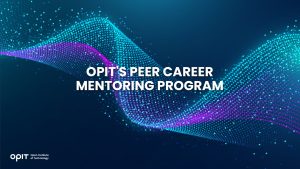
The Open Institute of Technology (OPIT) is the perfect place for those looking to master the core skills and gain the fundamental knowledge they need to enter the exciting and dynamic environment of the tech industry. While OPIT’s various degrees and courses unlock the doors to numerous careers, students may not know exactly which line of work they wish to enter, or how, exactly, to take the next steps.
That’s why, as well as providing exceptional online education in fields like Responsible AI, Computer Science, and Digital Business, OPIT also offers an array of career-related services, like the Peer Career Mentoring Program. Designed to provide the expert advice and support students need, this program helps students and alumni gain inspiration and insight to map out their future careers.
Introducing the OPIT Peer Career Mentoring Program
As the name implies, OPIT’s Peer Career Mentoring Program is about connecting students and alumni with experienced peers to provide insights, guidance, and mentorship and support their next steps on both a personal and professional level.
It provides a highly supportive and empowering space in which current and former learners can receive career-related advice and guidance, harnessing the rich and varied experiences of the OPIT community to accelerate growth and development.
Meet the Mentors
Plenty of experienced, expert mentors have already signed up to play their part in the Peer Career Mentoring Program at OPIT. They include managers, analysts, researchers, and more, all ready and eager to share the benefits of their experience and their unique perspectives on the tech industry, careers in tech, and the educational experience at OPIT.
Examples include:
- Marco Lorenzi: Having graduated from the MSc in Applied Data Science and AI program at OPIT, Marco has since progressed to a role as a Prompt Engineer at RWS Group and is passionate about supporting younger learners as they take their first steps into the workforce or seek career evolution.
- Antonio Amendolagine: Antonio graduated from the OPIT MSc in Applied Data Science and AI and currently works as a Product Marketing and CRM Manager with MER MEC SpA, focusing on international B2B businesses. Like other mentors in the program, he enjoys helping students feel more confident about achieving their future aims.
- Asya Mantovani: Asya took the MSc in Responsible AI program at OPIT before taking the next steps in her career as a Software Engineer with Accenture, one of the largest IT companies in the world, and a trusted partner of the institute. With a firm belief in knowledge-sharing and mutual support, she’s eager to help students progress and succeed.
The Value of the Peer Mentoring Program
The OPIT Peer Career Mentoring Program is an invaluable source of support, inspiration, motivation, and guidance for the many students and graduates of OPIT who feel the need for a helping hand or guiding light to help them find the way or make the right decisions moving forward. It’s a program built around the sharing of wisdom, skills, and insights, designed to empower all who take part.
Every student is different. Some have very clear, fixed, and firm objectives in mind for their futures. Others may have a slightly more vague outline of where they want to go and what they want to do. Others live more in the moment, focusing purely on the here and now, but not thinking too far ahead. All of these different types of people may need guidance and support from time to time, and peer mentoring provides that.
This program is also just one of many ways in which OPIT bridges the gaps between learners around the world, creating a whole community of students and educators, linked together by their shared passions for technology and development. So, even though you may study remotely at OPIT, you never need to feel alone or isolated from your peers.
Additional Career Services Offered by OPIT
The Peer Career Mentoring Program is just one part of the larger array of career services that students enjoy at the Open Institute of Technology.
- Career Coaching and Support: Students can schedule one-to-one sessions with the institute’s experts to receive insightful feedback, flexibly customized to their exact needs and situation. They can request resume audits, hone their interview skills, and develop action plans for the future, all with the help of experienced, expert coaches.
- Resource Hub: Maybe you need help differentiating between various career paths, or seeing where your degree might take you. Or you need a bit of assistance in handling the challenges of the job-hunting process. Either way, the OPIT Resource Hub contains the in-depth guides you need to get ahead and gain practical skills to confidently move forward.
- Career Events: Regularly, OPIT hosts online career event sessions with industry experts and leaders as guest speakers about the topics that most interest today’s tech students and graduates. You can join workshops to sharpen your skills and become a better prospect in the job market, or just listen to the lessons and insights of the pros.
- Internship Opportunities: There are few better ways to begin your professional journey than an internship at a top-tier company. OPIT unlocks the doors to numerous internship roles with trusted institute partners, as well as additional professional and project opportunities where you can get hands-on work experience at a high level.
In addition to the above, OPIT also teams up with an array of leading organizations around the world, including some of the biggest names, including AWS, Accenture, and Hype. Through this network of trust, OPIT facilitates students’ steps into the world of work.
Start Your Study Journey Today
As well as the Peer Career Mentoring Program, OPIT provides numerous other exciting advantages for those who enroll, including progressive assessments, round-the-clock support, affordable rates, and a team of international professors from top universities with real-world experience in technology. In short, it’s the perfect place to push forward and get the knowledge you need to succeed.
So, if you’re eager to become a tech leader of tomorrow, learn more about OPIT today.

The world has entered the age of artificial intelligence (AI), and this exciting new technology is already changing the face of society in an ever-growing number of ways. It’s influencing a plethora of industries and sectors, from healthcare and education to finance and urban planning. This guide explores AI’s impact on three of the core pillars of life: business, education, and sustainability.
AI in Business: Unlocking Unprecedented Opportunities
In the world of business, the number of uses of AI is growing by the day. Whether it’s in sales, marketing, customer relations, operational optimization, cybersecurity, data management, or some other aspect of organizational life, there are so many ways this technology can unlock new opportunities or expedite existing processes.
Take data as an example. Many businesses now collect and use large amounts of data to inform their decisions in areas like product development or marketing strategy. But they have, up to now, been limited in how they can structure, visualize, and analyze their data. AI changes all that, as it can dig into vast databases with ease, extracting insights to drive actionable decisions in no time.
AI also bridges gaps in communications. It has the power to speak in most major languages, translating audio or written text with astonishing accuracy in an instant. In a globalized world, where many businesses buy and sell with partners, suppliers, investors, and other stakeholders from other nations, AI can help them communicate and exchange information more easily and reliably.
AI in Education: Democratizing and Accelerating the Learning Process
In the educational sector, AI is solving problems that have plagued this industry for generations and transforming the ways in which students learn and teachers teach. It can be used, for example, to personalize a student’s learning plan or adapt content to align with each learner’s favored learning style, making it easier for them to soak up and retain information and skills.
AI’s generative capabilities are also proving useful in the education sector. Teachers, for example, can turn to generative AI models to create lesson plans or supplementary content to support their courses, such as tables, charts, infographics, and images. This all helps to make the learning experience more diverse, dynamic, and engaging for every kind of learner.
On a broader level, there’s clear potential for AI to democratize education across the globe, making learning more accessible to all. That includes those in developing nations who may normally lack opportunities to gain knowledge and skills to achieve their ambitions. If harnessed correctly and responsibly, this technology could elevate education to whole new heights.
AI in Sustainability: Smarter Cities and Next-Level Efficiency
Sustainability is one of the sticking points when talking about AI, as many critics of the technology point to the fact that it involves huge amounts of energy and relies heavily on large and costly data centers to operate. At the same time, AI could also solve many of the sustainability crises facing the world today, uncovering solutions and innovations that may have previously taken decades to develop.
It’s already proving its value in this domain. For instance, DeepMind developed an AI system that was actually able to optimize data center energy efficiency, cutting the amount of energy used to cool data center hardware by a whopping 40% and improving energy efficiency in certain centers by 15%. That’s just one example, and it’s only the start of what AI could do from an environmental perspective.
This tech is also making cities smarter, more efficient, and more pleasant in which to live through AI-powered navigation aids or traffic redistribution systems. It also holds potential for future urban planning, city development, and infrastructure construction, provided the correct systems and frameworks can be established to make the best use of AI’s advantages.
The Ethical Challenges and Risks of AI
Despite its almost countless advantages and possible applications, AI is not without its flaws. This technology brings challenges and risks to go along with its opportunities, and five leading examples include:
- Bias: Algorithmic bias is an issue that has already presented itself during the relatively brief existence of AI so far. Some systems, for example, have issued responses or generated content that could be classified as discriminatory or prejudiced, due to the training data they were given.
- Privacy: There are fears among populations and analysts about the amount of data being fed into AI systems and how such data could be misused, potentially violating people’s rights of privacy and falling foul of data privacy regulations, such as GDPR.
- Misuse: Like so many game-changing technologies, AI has the potential to be used for both benevolent and malicious purposes. It may be used to spread misinformation and “fake news,” influence public opinion, or even in cyber-attacks, for instance.
- Over-reliance: AI is so powerful, with the capacity to carry out tasks with remarkable precision and speed, that it will be tempting for organizations to integrate it into many of their workflows and decision-making processes. But AI cannot be treated as a substitute for human judgment.
- Sustainability: There are also fears about the energy costs associated with AI and the data centers needed to power it, plus the fact that some elements of the burgeoning AI industry may exploit workers in poorer nations worldwide.
Solving These Challenges: Regulation and Responsible Use of AI
With the right approach, it is possible to solve all the above challenges, and more, making AI the most valuable and beneficial new technology the world has seen since the advent of the internet. This will require a two-pronged strategy focusing on both regulation and responsible usage.
Europe is already leading the way in the first aspect. It has introduced the AI Act – a world-first regulatory framework related to artificial intelligence, laying out how it should be used to drive innovation without infringing on the fundamental rights of workers and the larger public.
Educational institutions like the OPIT – Open Institute of Technology are also leading the way in the second aspect, educating people around the world on how to work with AI in a responsible, ethical way, through programs like the MSc in Responsible Artificial Intelligence.
By establishing rules and regulations about AI’s usage and educating the tech leaders of tomorrow in how to work with AI in a fair and responsible way, the future is bright for this exciting and extraordinary new technology.
Have questions?
Visit our FAQ page or get in touch with us!
Write us at +39 335 576 0263
Get in touch at hello@opit.com
Talk to one of our Study Advisors
We are international
We can speak in:

